#Paperbacks from Hell
Text









Paperback cover art by British artist Les Edwards
#horror fiction#books#vintage paperbacks#paperback books#horror#vintage paperback#paperbacks from hell
107 notes
·
View notes
Text

Now reading 📚... Paperbacks From Hell by Grady Hendrix (2017) #book #books #nonfiction #paperbacksfromhell #gradyhendrix #2010s
8 notes
·
View notes
Text
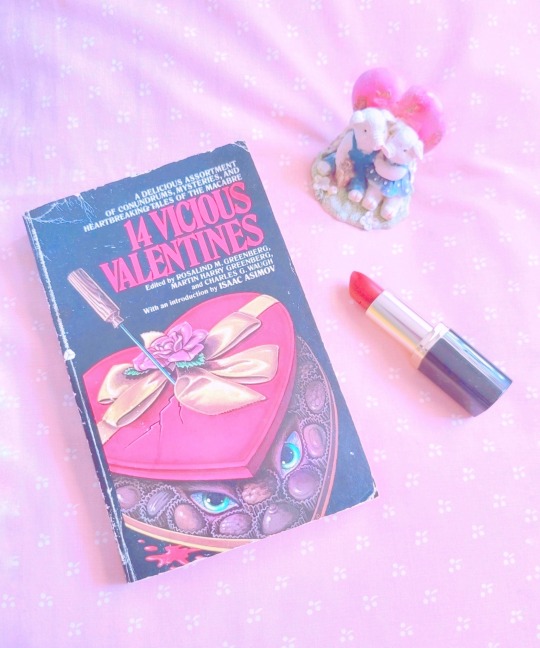
#mine#my photos#nicole dollanganger#kindercore#dollette#morute#softette#melanie martinez#dollcore#lovecore#femme fatale#coquette aesthetic#soft aesthetic#softcore#pinkcore#paperbacks from hell#vintage aesthetic#valentines day 2023#lizzy grant#vintage horror
129 notes
·
View notes
Text
Death ed Stuart David Schiff


Death
ed Stuart David Schiff
1982, Playboy Paperbacks
Two Bottles of Relish by Lord Dunsany (orig Time & Tide, Nov 12, 1932)
A variation on a locked door mystery - a body disposal without leaving the house mystery. This one stayed with me since childhood, though the premise wasn't as locked in as it could be.
Deathtracks by Dennis Etchison
A Nielson family survey taker visits a couple who look for hidden messages in TV laugh tracks to explain why their son died in Vietnam.
Always Together by Hugh B. Cave
One elderly twin murders the other and keeps up a ruse that she's still alive. A good setup for a twist in the tale which never happens.
Toilet Paper Run by Juleen Brantingham
Engaging story set in a girls' reform school, but the ending felt tacked on to fit the genre.
The Green Parrot by Joseph Payne Brennan (orig Weird Tales, July 1952)
Another boring entry in the "that person you thought was alive turns out was already dead" style of ghost story.
Fragment from a Charred Diary by Davis Grubb
Comedy piece about a man using a voodoo doll to commit the political assassinations of the 1960s, escalating from there.
The Scarf by Bernice Balfour
A disfigured woman concealing her face with a scarf and a curious newspaper delivery boy.
Sentences by Richard Christian Matheson
Comedy twist in the tale about a man getting his life rewritten.
Prickly by David A. Riley
A child corrupting Satanist with a monkey familiar kills himself in a British tenement building. Years later, strange creatures scuttle the halls, and children sing nursery rhymes about Prickly.
The Kennel by Maurice Level (orig Tales of Mystery and Horror, 1920)
A cuckold husband finds the body of his wife's lover and disposes of it.
Onawa by Alan Ryan
An adoptive native girl with a taste for blood
A Telephone Booth by Wade Kenny
A gambler can get tips from the future from a pay phone.
Straw Goat by Ken Wiseman
Folk horror with murderous farmers and a sacrificial straw goat.
Horrible Imaginings by Fritz Leiber
Long piece about a creep being obsessed with his neighbor, which I skipped.
The Blind Spot by Saki (orig Beasts and Super-Beasts, 1914)
Comedy piece about a killer servant.
The Dust by Al Sarrantonio
A simpleton shut-in is obsessed with dust.
It Grows on You by Stephen King
A vignette of small town misery which feels more like background to a fuller story. It's been re-written a few times, and later versions may be more tied in to the Castle Rock mythos and be more explicitly horrific. Something about a house getting a new wing built connected with people dying, but not much meat on the bones here.
The Copper Bowl by George Fielding Eliot (orig Weird Tales, December 1928)
Nasty proto-shudder pulp yellow peril story of a French Legionnaire's love being tortured by a Chinese despot.
From Amazon https://amzn.to/3vkEvlR
12 notes
·
View notes
Text
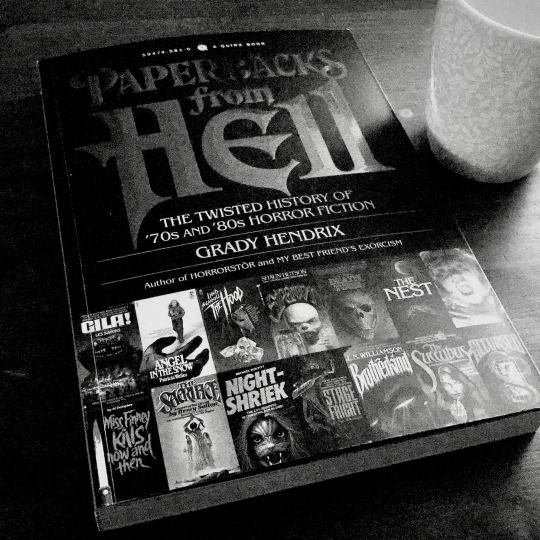
My current high-end very important PhD research. This reading is what your taxes are helping to fund, so I think we can all agree I need more money from everyone. Including the pope. Maybe.
#horror#books#literature#illustration#horror books#horror fiction#horror novels#cover art#book cover#black and white#black and white books#scary#pulp novel#paperbacks#paperbacks from hell#horror story#horror art#horror artwork
9 notes
·
View notes
Text
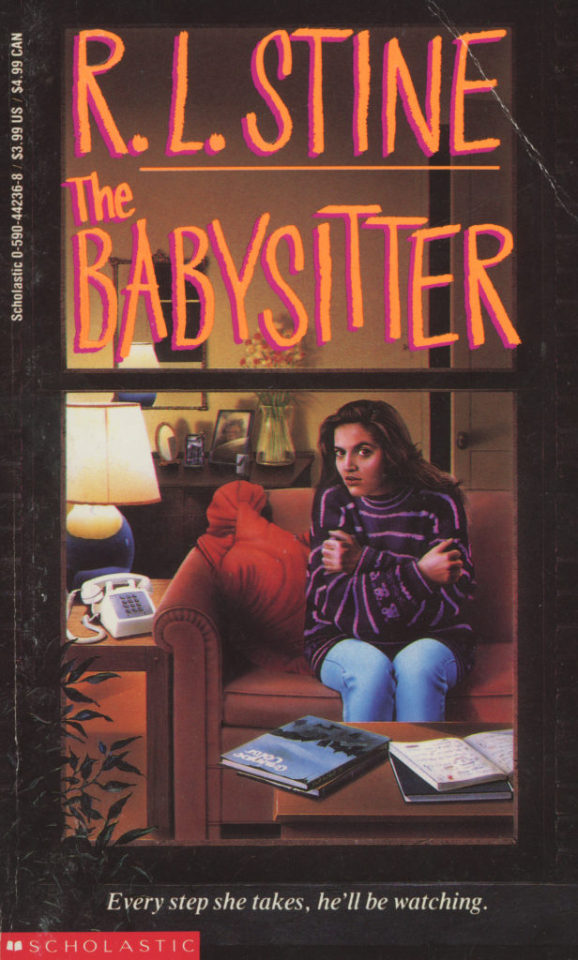


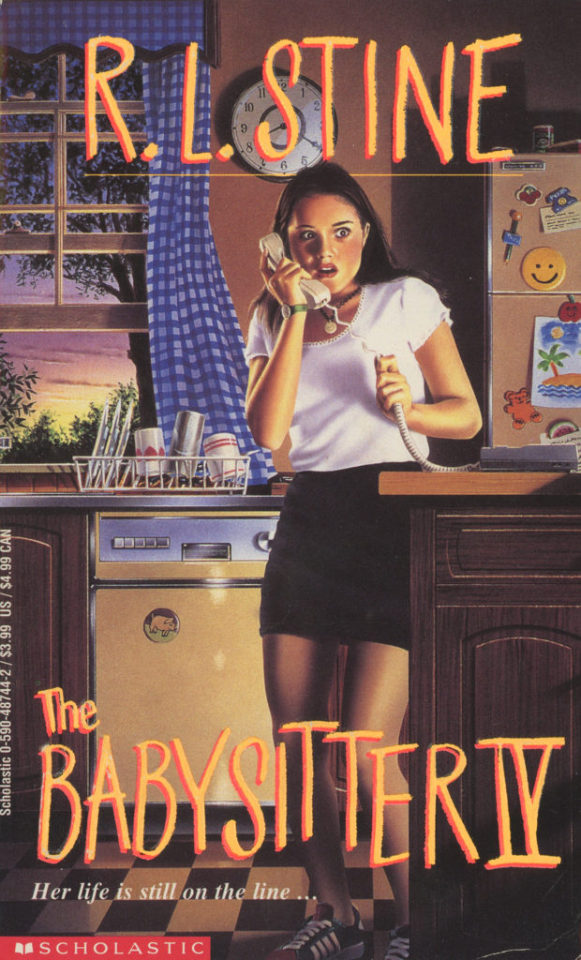
The Babysitter
The Babysitter remains one of R.L. Stine’s most notorious books outside of his Goosebumps and Fear Street titles, and rightly so. Jenny was a relatable and endearing protagonist. Stine did an excellent job with the pacing, slowly building the tension with some genuinely unnerving scenes. On the downside, I had some problems with the motives of the villain and there was some really shoddy police work that was presented as exceptional. I was also baffled by one particular action of Jenny’s mother, which I’ll save for the full review below because of spoilers. I’ll just say that sometimes it’s hard to distinguish between bad/oblivious parenting and things that were still considered OK in the late 1980s. Overall, I really enjoyed this one in spite of its flaws.
Score: 3.5
Full Review: https://www.danstalter.com/the-babysitter/
The Babysitter II
The Babysitter II was a very middle-of-the-road sequel. The characters were solid and by far the strongest part overall. But for every element I liked, there was something of equal measure that I didn’t. The book had some very dated depictions of mental health, which were hard to look past. I hated Jenny’s psychiatrist from the jump. It was immediately apparent he was a bad fit for a traumatized teenage girl. I suppose he sucked in a believable way, but I can’t help but cringe at unhelpful depictions of therapy. It’s OK to break up with your therapist, folks. Jenny certainly needed to. The dream sequences also got really tiring after the first one. Unless the book is about dreams specifically, they just feel cheap. The kid that Jenny babysits for in this round was presented as a menace to society. Eli Wexner is a child genius, he has mood swings, he likes tarantulas, and he can be straight-up weird. I think he read more as an autistic kid with inexperienced and overwhelmed parents than anything threatening. I don’t know if that’s what Stine was going for, but that’s definitely what I got as the story progressed. The other reason I’m being hard on this one is that I guessed the plot twist way earlier than I usually do. I suppose the book holds up as a competent mystery if you aren’t familiar with any other books R.L. Stine has written. For me, it felt like a partial rehashing of the first book and a mix of things I’ve seen repeatedly in the Fear Street books. The Babysitter II wasn’t the worst, and it wasn’t the best. It’s a mostly competent sequel that just didn’t bring anything particularly new to the table.
Score: 2.5
Full Review: https://www.danstalter.com/the-babysitter-ii/
The Babysitter III
The Babysitter III felt like a sequel in search of a story. I’ll start with the good; at least Jenny wasn’t taking on yet another babysitting job after her experiences in the first two books. It changed the formula by introducing Jenny’s cousin Debra as this book’s titular babysitter. Unfortunately, I still saw the twist ending coming from a mile away. It had too many similarities to other Stine books. Everything he did here, he’s done it before and he’s done it better. There were a bunch of B-plot elements that ultimately served no purpose other than to throw the reader off the real trail. The B-plots are great for this function, but they work best when they also tie back into the main storyline. Almost none of them did. Jenny is also very clearly dealing with PTSD, but no longer appears to be in therapy or have any sort of support system in place. I’m used to dated and problematic depictions of mental health in these books, but this one just felt hard to watch. It was like one long, sad cringe. The book also relied on some characterization changes that I just couldn’t buy into. It made me wish the whole Babysitter series featured a different protagonist in each installment. Because the first Babysitter book was great; I consider it one of Stine’s best. The Babysitter II was less so but not bad. This one just felt phoned in. The ending of The Babysitter III does hold some promise for the fourth and final installment, but I can’t say I have a ton of confidence in that happening.
Score: 1
Full Review: https://www.danstalter.com/the-babysitter-iii/
The Babysitter IV
I did not go into this book with high expectations, so I was very pleasantly surprised when this book took a fresh direction. The Babysitter III had squeezed every last bit out of using Mr. Hagan as a villain, so I was happy to see that he was barely mentioned all in The Babysitter IV. In a lot of ways, this book was about Jenny reclaiming the narrative for herself. The way that Jenny’s past experiences caused her to question her own sanity at every turn made for a unique perspective that a lot of sequels miss out on. I figured out some of the twist ending early on, but I wasn’t bothered by it. What did bother me was how rushed the ending was. There was a whole other story received in the last few pages that deserved its own spotlight. It was a shame because I really liked the story it was telling, I just wanted more than an eleventh-hour info dump. I can’t be more specific without dropping massive spoilers, but almost all of the issues I had with this book stem from how it ended. I still liked The Babysitter IV more than I didn’t, and I was happy to see the final installment in the series end on such a strong note.
Score: 3.5
Full Review: https://www.danstalter.com/the-babysitter-iv/
#books#nostalgia#fits of nostalgia#book review#rl stine#horror#lit#point horror#the babysitter#90s aesthetic#paperbacks from hell#teen horror
9 notes
·
View notes
Text

Coffee ☕ in my mermaid cup and two new reads today 😁💓📚🧋
#lol#love#personal#me#coffee#book#books#books of tumblr#shadow in the ember#paperbacks from hell#reader#reading#reader girl#tarot#coffe#coffee mug#drink choice
6 notes
·
View notes
Text

There is such a particular beauty to old covers. Not to say there aren’t absolutely stunning covers now-a-days, I just enjoy and miss the aesthetic of hand-painted artworks crafted for a cover you might only spend a total of twenty seconds looking at.
Abstract covers can be beautiful, for sure, but not every story, or genre, requires ambiguity in its packaging. I think a wonderful romp through this particular style of cover is the nonfiction book Paperbacks from Hell by Grady Hendrix. (Whose fiction I am currently binging) The added benefit, I feel, of this book is the attention it draws to the artists behind these covers! There is a huge industry of massively talented artists out there who created these memorable and breathtaking pieces. Personal opinion, it’d be great if not just the authors got to become names known by the public. Wouldn’t it be cool if all the folks who had a direct hand in shaping the final product of the book, artists, editors, etc. could be more openly credited? Yes, yes, names often appear inside the book… in small text… on the copyright page. I’m thinking more prominently than that though. Like credits on a film.
Some of my favorite covers are those that capture your attention, arresting you in your book shopping, and demand that you take a peak, see what lies inside. Then, of course, about six hours of reading in, you realize the cover has bloody all to do with the book you’re actually reading. Some of the reprintings of H.P. Lovecraft’s works or some older sci-fi will have this strange occurrence. Where it almost feels as though the artist was given the title of the work, and nothing else to work off.
Then there are the others which come straight out and tell you exactly what’s about to happen and only upon finishing the book do you realize how many spoilers were right there in the cover art. Ballsy.
#TheWhippingStar by#FrankHerbert#coverartist#brucepennington#oldbookcovers#traditionalart#scifibooks#scifi#bookish#bookdragon#bookgoblin#bookblr#bookstagram#oldthemyellsatcloud#aswasthestyleatthetime#paperbacks from hell#grady hendrix
2 notes
·
View notes
Text
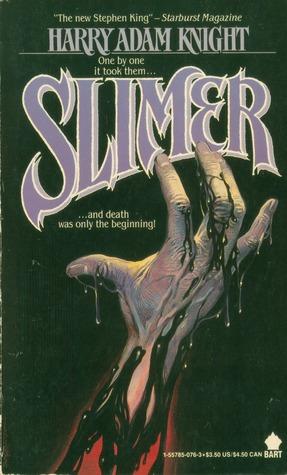



16 notes
·
View notes
Text
I guess Barnes & Noble carries Valancourt's Paperbacks from Hell reprints now, which is good, bc it's wild to encounter a book that looks like Hell Hound by Ken Greenhall in a bookstore in 2024, but also in context it's funny to have the horror table right behind ones for romantasy and Sarah J Maas. It's 2024 and there's one step between Heartstopper and Let's Go Play at the Adams'
3 notes
·
View notes
Text
Paperbacks From Hell: The Twisted History of ‘70s and ‘80s Horror Fiction (Grady Hendrix, 2017)
5/5 stars
A perfect read for horror bibliophiles! Hendrix does a fantastic job breaking down the historical/political background for the various pulp horror subgenres, all with a fantastic sense of humor. It’s obvious that Hendrix both loves horror and did his research for this book — the details in the plot summaries, the author and illustrator biographies, and notes on the field’s changing landscape are all meticulous and fun to read.
My only complaint is that my TBR pile has tripled after reading this book, but that only means I’ll have some fun horror novels to page through soon!
Books left: 915
9 notes
·
View notes
Text









1980a horror paperback covers by artist David Mann
#horror fiction#books#reading#vintage paperbacks#horror#paperback books#vintage paperback#paperbacks from hell#1980s horror
75 notes
·
View notes
Text

Book 📖 of the day: Paperbacks From Hell by Grady Hendrix (2017) #book #books #nonfiction #paperbacksfromhell #gradyhendrix #2010s
4 notes
·
View notes
Photo

5 notes
·
View notes
Text
Claw Hammer by Paul Dale Anderson
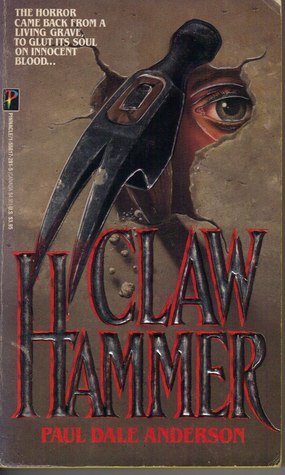
Claw Hammer
by Paul Dale Anderson
1989 Pinnacle
A girl who survived her family being claw hammered to death is at the center of a series of claw hammer murders. An ineffectual detective teams up with an even more ineffectual pathologist.
Occupies that in-between world of psychological thrillers - there are grisly murders but it doesn't feel like horror, it could be a mystery but the killer is revealed halfway through, could be a procedural but the cops don't do much.
Bad profiling (the killer is a woman because men use guns, whereas women use kitchen implements, like claw hammers). Bad criminal justice (the DA takes the police off the case and indicts a defendant overnight). Bad psychology (the killer kills due to a corpus callosum, which renders them barely functioning but highly cunning).
There's only one brief, half sex scene, but lots and lots of leering, mostly at teens. Bad mix of incest and child molesting with titillating skinning dipping and bikini wearing.
Available from Amazon
9 notes
·
View notes
Text

The Deadly Fire surprised me in that it was much more enjoyable than The Deadly Secret. It suffered from some of the same logic problems as each of the previous two books, but it managed to avoid repetition and kept things entertaining. Drag racing was the natural next step for the trilogy to take, and I think that aspect of the book worked really well. The book also features the highest body count of the trilogy, with a particularly brutal opener. I was also very relieved not to have another 1698 storyline of Catherine and William. We do finally get Catherine’s perspective for the first time since her car embodiment. Her logic and reasoning for all the murdering are threadbare at best, and so I have concluded that she’s just really stupid. The time travel mechanics are another weak point that I will elaborate on in the Spoilers. There was also a genderqueer element that I really appreciated. I would have enjoyed seeing a deeper take on that, but I don’t think a 1995 audience would have been ready for it. In the end, The Deadly Fire served its purpose in wrapping the trilogy up, and it managed to keep things interesting in doing so. It’s hard to be mad about that.
Score: 3
For my extended recap and dee-dive take on the book, you can find it on my website blog: https://www.danstalter.com/the-deadly-fire/
#books#nostalgia#fits of nostalgia#book review#horror#currently reading#rl stine#lit#photography#fear street#paperbacks from hell#cataluna chronicles
5 notes
·
View notes